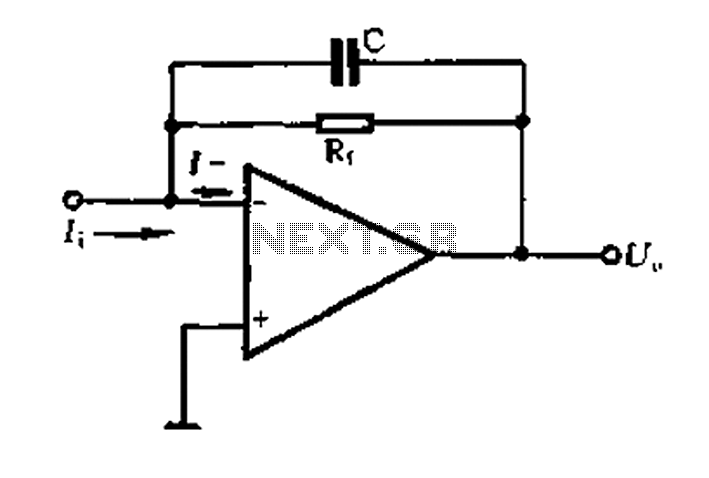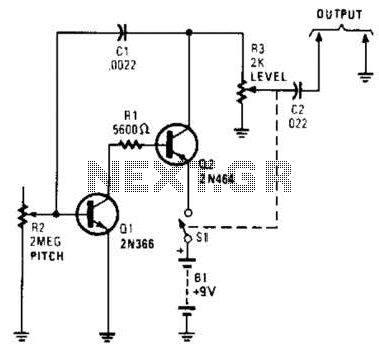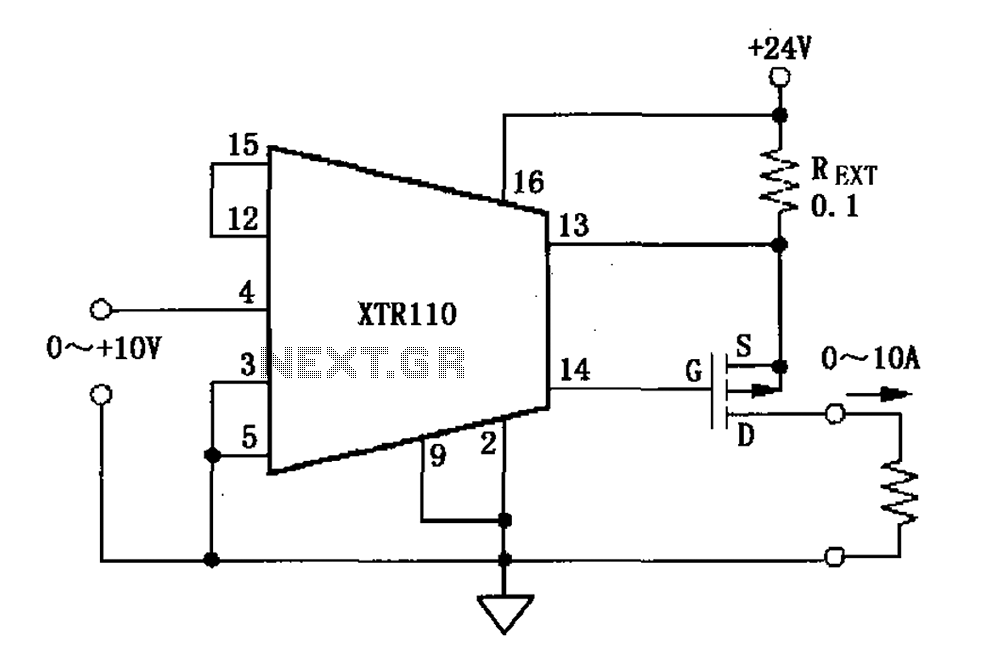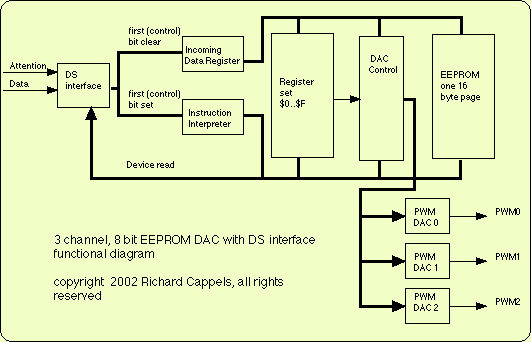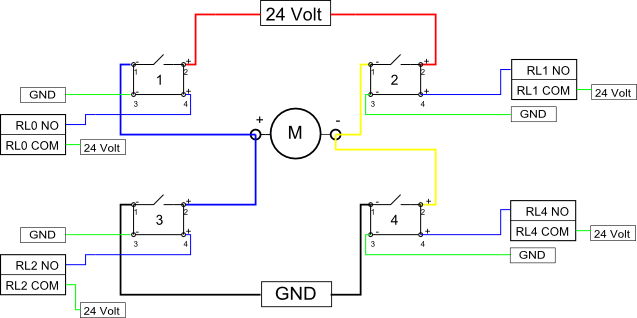
ADC0809 and PC bus interface circuit
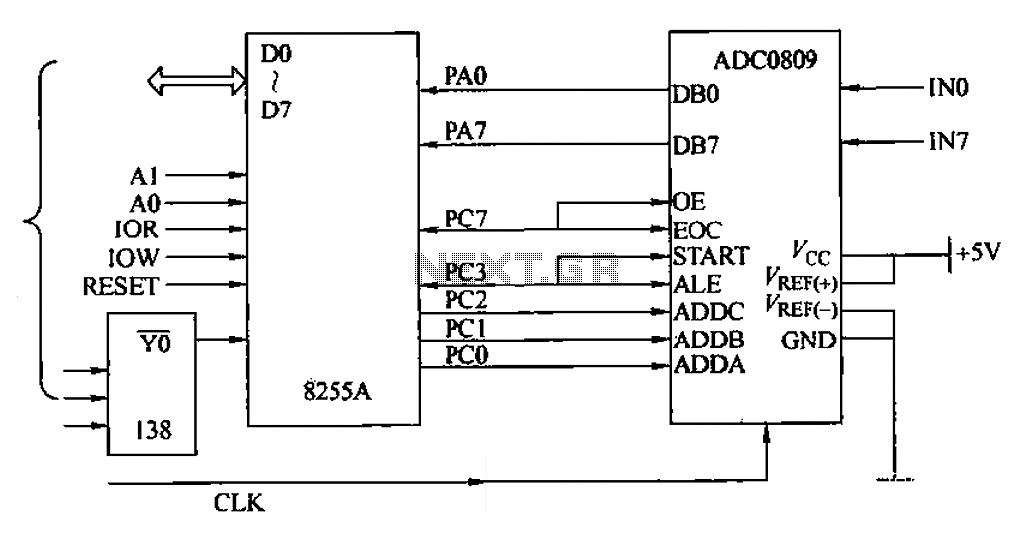
The ADC0809 is an 8-channel analog switch integrated with an 8-bit successive approximation analog-to-digital (A/D) converter. It supports the selection of eight input channels through address latch and encoder channel selection signals ADDA, ADDB, and ADDC. The address latch enable signal (ALE) facilitates the selection of the input channels, which are connected to the A/D converter. The A/D converter can process analog signals and convert them into an 8-bit binary output, which is then stored in a tri-state latch output buffer. A positive pulse signal (SD) initiates the conversion process, which takes approximately 100 microseconds to complete. Once the conversion is finished, the end-of-conversion (EOC) signal transitions from low to high, indicating to the CPU that the data is ready to be read. The tri-state latch output buffer retains the conversion results, and when the output enable signal (OE) is high, the 8-bit conversion result is available on the data output lines (DO-D7). When OE is low, these lines enter a high impedance state. The ADC0809's tri-state latch output buffer allows for direct connection to the system bus, and it is commonly interfaced with microcontrollers or microprocessors via a parallel interface, such as through the programmable parallel interface chip 8255A, facilitating connections to a PC.
The ADC0809 is designed to provide efficient analog-to-digital conversion for a variety of applications, including sensor data acquisition and real-time signal processing. The device utilizes a successive approximation method for conversion, which allows for high-speed processing of analog signals. The integration of an address latch enables the selection of multiple input channels, making the ADC0809 suitable for systems requiring multiple analog inputs.
The operation begins when an input channel is selected via the address signals ADDA, ADDB, and ADDC. The ALE signal is then activated to latch the selected channel. Upon receiving the start conversion signal (SD), the ADC0809 initiates the conversion process. The conversion time is fixed at approximately 100 microseconds, after which the EOC signal indicates that the digital representation of the analog input is ready for retrieval.
The output data is available on the DO-D7 lines, which are driven by the tri-state latch output buffer. The tri-state feature allows the ADC0809 to share the data bus with other devices, thus enhancing the flexibility of the overall system architecture. The OE signal controls the output state; when enabled, the conversion results are presented on the data lines, while disabling the output places the lines in a high impedance state, preventing bus contention.
In practical applications, the ADC0809 can be interfaced with various microcontrollers or microprocessors, utilizing the 8255A interface chip for parallel communication. This configuration allows for straightforward integration into larger systems, enabling seamless data flow from multiple analog sources to digital processing units. The ADC0809 is thus a versatile component for engineers designing systems that require efficient and reliable analog-to-digital conversion.ADC0809 is an 8-channel analog switch with an 8-bit successive approximation A/D converter. ADC0809 8-channel analog switches can be realized now 8 to 1, an address latch and d ecoder channel selection signals ADDA, ADDB, ADDC. For selecting eight input channels a one, the address latch enable signal ALE can ADDA, ADDB, ADDC selected input channel and A/D converter connected. Eight successive approximation state D conversion analog signal converter can be input into an 8-bit binary apply, transfer to deposit conversion result output buffer tristate latch punch unit.
Positive pulse signal SD RT allows A/D converter to start the conversion, the conversion is completed after about lOOtjtS, turn after the change. EOC signal from low level to high level. Notify CPU read the data. Tri-state latch output buffer used to store the conversion result, when the output enable signal OE is high when Xu.
8-bit conversion result is output from the DO-D7, when OE is low, the data output lines DO-D7 high impedance state. Due to ADC0809 has tristate latch output buffer, which can be directly connected to the system bus. In order to facilitate or simplify the interface circuit design, usually more common parallel interface through microarrays implementation and system interfaces.
The circuit shown in FIG. ADC0809 is connected via programmable parallel interface chip 8255A achieve a circuit connected to the PC. edText, GET, ); Top class diggnum id diggnum
The ADC0809 is designed to provide efficient analog-to-digital conversion for a variety of applications, including sensor data acquisition and real-time signal processing. The device utilizes a successive approximation method for conversion, which allows for high-speed processing of analog signals. The integration of an address latch enables the selection of multiple input channels, making the ADC0809 suitable for systems requiring multiple analog inputs.
The operation begins when an input channel is selected via the address signals ADDA, ADDB, and ADDC. The ALE signal is then activated to latch the selected channel. Upon receiving the start conversion signal (SD), the ADC0809 initiates the conversion process. The conversion time is fixed at approximately 100 microseconds, after which the EOC signal indicates that the digital representation of the analog input is ready for retrieval.
The output data is available on the DO-D7 lines, which are driven by the tri-state latch output buffer. The tri-state feature allows the ADC0809 to share the data bus with other devices, thus enhancing the flexibility of the overall system architecture. The OE signal controls the output state; when enabled, the conversion results are presented on the data lines, while disabling the output places the lines in a high impedance state, preventing bus contention.
In practical applications, the ADC0809 can be interfaced with various microcontrollers or microprocessors, utilizing the 8255A interface chip for parallel communication. This configuration allows for straightforward integration into larger systems, enabling seamless data flow from multiple analog sources to digital processing units. The ADC0809 is thus a versatile component for engineers designing systems that require efficient and reliable analog-to-digital conversion.ADC0809 is an 8-channel analog switch with an 8-bit successive approximation A/D converter. ADC0809 8-channel analog switches can be realized now 8 to 1, an address latch and d ecoder channel selection signals ADDA, ADDB, ADDC. For selecting eight input channels a one, the address latch enable signal ALE can ADDA, ADDB, ADDC selected input channel and A/D converter connected. Eight successive approximation state D conversion analog signal converter can be input into an 8-bit binary apply, transfer to deposit conversion result output buffer tristate latch punch unit.
Positive pulse signal SD RT allows A/D converter to start the conversion, the conversion is completed after about lOOtjtS, turn after the change. EOC signal from low level to high level. Notify CPU read the data. Tri-state latch output buffer used to store the conversion result, when the output enable signal OE is high when Xu.
8-bit conversion result is output from the DO-D7, when OE is low, the data output lines DO-D7 high impedance state. Due to ADC0809 has tristate latch output buffer, which can be directly connected to the system bus. In order to facilitate or simplify the interface circuit design, usually more common parallel interface through microarrays implementation and system interfaces.
The circuit shown in FIG. ADC0809 is connected via programmable parallel interface chip 8255A achieve a circuit connected to the PC. edText, GET, ); Top class diggnum id diggnum
Warning: include(partials/cookie-banner.php): Failed to open stream: Permission denied in /var/www/html/nextgr/view-circuit.php on line 713
Warning: include(): Failed opening 'partials/cookie-banner.php' for inclusion (include_path='.:/usr/share/php') in /var/www/html/nextgr/view-circuit.php on line 713
